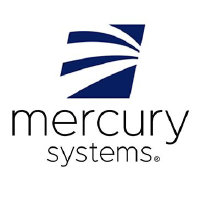
Mercury Systems Inc
NASDAQ:MRCY
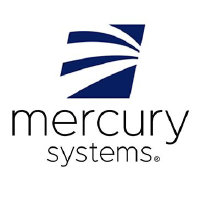

| US |

|
Salesforce Inc
NYSE:CRM
|
Technology
|
| CL |
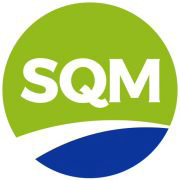
|
Sociedad Quimica y Minera de Chile SA
NYSE:SQM
|
Chemicals
|
| US |

|
UnitedHealth Group Inc
NYSE:UNH
|
Health Care
|
| US |
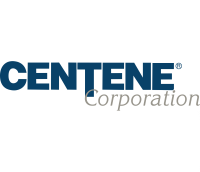
|
Centene Corp
NYSE:CNC
|
Health Care
|
| US |

|
Charles River Laboratories International Inc
NYSE:CRL
|
Life Sciences Tools & Services
|
| US |

|
Autozone Inc
NYSE:AZO
|
Retail
|
| US |

|
ServiceNow Inc
NYSE:NOW
|
Technology
|
| US |

|
Valero Energy Corp
NYSE:VLO
|
Energy
|
| US |

|
Palantir Technologies Inc
NYSE:PLTR
|
Technology
|
| US |

|
Mosaic Co
NYSE:MOS
|
Chemicals
|
| US |

|
Roblox Corp
NYSE:RBLX
|
Media
|
| US |

|
Quanta Services Inc
NYSE:PWR
|
Construction
|
| US |

|
Albemarle Corp
NYSE:ALB
|
Chemicals
|
| US |

|
Crocs Inc
NASDAQ:CROX
|
Textiles, Apparel & Luxury Goods
|
| US |

|
Fortinet Inc
NASDAQ:FTNT
|
Technology
|
| US |

|
Starbucks Corp
NASDAQ:SBUX
|
Hotels, Restaurants & Leisure
|
Utilize notes to systematically review your investment decisions. By reflecting on past outcomes, you can discern effective strategies and identify those that underperformed. This continuous feedback loop enables you to adapt and refine your approach, optimizing for future success.
Each note serves as a learning point, offering insights into your decision-making processes. Over time, you'll accumulate a personalized database of knowledge, enhancing your ability to make informed decisions quickly and effectively.
With a comprehensive record of your investment history at your fingertips, you can compare current opportunities against past experiences. This not only bolsters your confidence but also ensures that each decision is grounded in a well-documented rationale.
Do you really want to delete this note?
This action cannot be undone.

| 52 Week Range |
26.23
43.91
|
| Price Target |
|
We'll email you a reminder when the closing price reaches USD.
Choose the stock you wish to monitor with a price alert.

|
Salesforce Inc
NYSE:CRM
|
US |

|
Sociedad Quimica y Minera de Chile SA
NYSE:SQM
|
CL |

|
UnitedHealth Group Inc
NYSE:UNH
|
US |

|
Centene Corp
NYSE:CNC
|
US |

|
Charles River Laboratories International Inc
NYSE:CRL
|
US |

|
Autozone Inc
NYSE:AZO
|
US |

|
ServiceNow Inc
NYSE:NOW
|
US |

|
Valero Energy Corp
NYSE:VLO
|
US |

|
Palantir Technologies Inc
NYSE:PLTR
|
US |

|
Mosaic Co
NYSE:MOS
|
US |

|
Roblox Corp
NYSE:RBLX
|
US |

|
Quanta Services Inc
NYSE:PWR
|
US |

|
Albemarle Corp
NYSE:ALB
|
US |

|
Crocs Inc
NASDAQ:CROX
|
US |

|
Fortinet Inc
NASDAQ:FTNT
|
US |

|
Starbucks Corp
NASDAQ:SBUX
|
US |
This alert will be permanently deleted.
 Mercury Systems Inc
Mercury Systems Inc
Earnings Call Analysis
 Q1-2024 Analysis
Mercury Systems Inc
Q1-2024 Analysis
Mercury Systems Inc
Mercury Systems, specializing in mission-critical processing at the edge, has highlighted two main transitory issues: a high mix of low-margin development programs expected to evolve into higher-margin production programs and a buildup in working capital, especially in unbilled receivables and inventory. These challenges have placed near-term pressure on the company's financial performance, but they are viewed as indicators of future organic growth. To mitigate these issues, Mercury Systems is progressing development programs toward completion and billing milestones and aims to switch to a just-in-time operational model to balance working capital more efficiently.
Bookings for Q1 were at $192 million, with a 1.06 book-to-bill ratio, leading to a $1.15 billion backlog, indicating potential for future revenue. However, the company experienced a significant revenue decline of 20% year-over-year, owing to a strategic pivot towards improving execution, particularly for challenged programs. A switch to just-in-time operational models also contributed to the temporary decline. Gross margins reduced from 34.3% to 27.9% due to program mix and cost growth impacts. The company also reported a GAAP net loss of $36.7 million and an adjusted loss per share of $0.24. Despite these numbers, there's anticipation of a better performance in the second half of the fiscal year with improved bookings and the completion of challenged programs.
Mercury Systems has implemented a restructuring action, which included workforce reductions and decreased discretionary and third-party spending. These actions are expected to provide $20 to $22 million in cost savings for fiscal year 2024, with annualized savings of around $24 million going forward. Operational expenses were impacted in Q1 due to restructuring charges, but increased tax benefits partially offset the losses. The initiative underscores the company's efforts to manage costs and demonstrates a commitment to enhancing profitability and shareholder value.
Mercury Systems anticipates a ramp-up in performance, bookings, and margin revenues in the latter half of the fiscal year. The company has maintained its adjusted EBITDA guidance at $160 million to $185 million, which would mark a 30% increase at the midpoint from the previous fiscal year. The adjusted earnings per share (EPS) are forecasted to range from $1.19 to $1.54. These projections are premised on the successful completion of a majority of challenged programs and a transition to improved operational models that align material timing with hardware delivery. Significant improvement in cash flow is also expected, reinforcing the company's potential for long-term growth and working capital improvements.
Despite facing several challenges that have pressured its recent financial results, Mercury Systems is focused on turning the tides with stronger performance in the second half of the fiscal year. With multiple meaningful awards expected in the upcoming quarter and ongoing efforts to enhance execution, Mercury Systems is well-positioned for organic growth, margin expansion, and improved cash flow. The success of these initiatives is critical for illustrating the company's long-term value potential to investors.



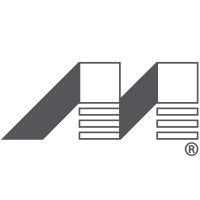


 You don't have any saved screeners yet
You don't have any saved screeners yet

Good day, everyone, and welcome to the Mercury Systems First Quarter Fiscal 2024 Conference Call. Today's call is being recorded. At this time for opening remarks and introductions, I would like to turn the call over to the company's Executive Vice President and Chief Financial Officer, Dave Farnsworth. Please go ahead, Mr. Farnsworth.
Good afternoon, and thank you for joining us. With me today is our President and Chief Executive Officer, Bill Ballhaus. If you've not received a copy of the earnings press release we issued earlier this afternoon, you can find it on our website at mrcy.com. The slide presentation that Bill and I will be referring to is posted on the Investor Relations section of the website under Events and Presentations.
Turning to Slide 2 in the presentation, I'd like to remind you that today's presentation includes forward-looking statements, including information regarding Mercury's financial outlook, future plans, objectives, business prospects and anticipated financial performance. These forward-looking statements are subject to future risks and uncertainties that could cause our actual results or performance to differ materially.
All forward-looking statements should be considered in conjunction with the cautionary statements on Slide 2 in the earnings press release and the risk factors included in Mercury's SEC filings. I'd also like to mention that in addition to reporting financial results in accordance with generally accepted accounting principles or GAAP, during our call, we will also discuss several non-GAAP financial measures, specifically adjusted income, adjusted earnings per share, adjusted EBITDA, free cash flow, organic revenue and acquired revenue.
A reconciliation of these non-GAAP metrics is included as an appendix to today's slide presentation and in the earnings press release. I'll now turn the call over to Mercury's President and CEO, Bill Ballhaus. Please turn to Slide 3.
Thanks, Dave. Good afternoon, everyone. Thank you for joining our Q1 FY '24 earnings call. Today, I'd like to talk through 3 topics: first, some introductory comments on our business and results. Second, an update on the progress we are making in each of our 4 priority areas that we outlined in our last call: delivering predictable performance, building and thriving growth engine, expanding margins and driving improved free cash flow. And third, expectations for our performance, both for FY '24 and longer term. Then I'll turn it over to Dave, who will walk through our financial results and guidance in more detail.
Please turn to Slide 4. Since our last quarter's call and during my first full quarter in the business, I've had the opportunity to meet with a number of customers visit our Mercury teams and facilities domestically and abroad and deepen my understanding of the underlying opportunities and challenges in the business. As I said last quarter, I am optimistic and confident in our strategic positioning as a leader in mission-critical processing at the edge, the attractiveness of our business model, and our outlook over time to deliver predictable organic growth with expanding margins and robust free cash flow. In the near term, however, we are addressing 2 transitory dynamics in our business that are impacting our financial results.
First, a high mix of low-margin development programs that we expect to eventually transition into a portfolio of predictably performing production programs; and second, an increase in working capital over the last few years namely in unbilled receivables and inventory that will convert over time into significant free cash flow. I'd like to provide a little color on these 2 transients before turning to our priorities including how we are addressing these dynamics.
Please turn to Slide 5. With respect to the volume of development activities, as we discussed last quarter, we entered the year with an increased mix of development revenue versus production revenue at approximately 40-60 versus our historical norm of 20-80. We view this increased mix as a positive indicator of future organic growth as we complete the development efforts and transition to production programs. In the near term, however, and including in Q1, a we are seeing this higher mix impact our P&L in a number of ways.
First, mix-driven margin pressure as our development programs typically generate 1,000 basis points lower gross margin on average than our production programs. Second, cost growth impact on a subset of programs, a majority of which are development in nature, has led to additional volatility in our revenue and gross margin. Third, continued buildup of working capital as we progress these programs, which are typically overtime contracts toward completion and billing milestones. And fourth, lumpiness and delays in follow-on development task orders and production contracts tied to completion of development activities.
Again, despite the near-term impacts on our results, we view this increased mix of development work as a positive leading indicator of organic growth associated with the transition of the development efforts to production contracts. I'll come back to our progress in executing on the development programs in a moment.
Please turn to Slide 6. Turning now to the second transient I mentioned, which is the large ramp in unbilled receivables and inventory over the last 2 years, largely related to our subsystem development programs. The increase in unbilled receivables has occurred across a number of large, long-standing contracts, many of which relate to our challenge programs where revenue is recognized as we make progress on the contracts or specifically as material is consumed and hardware is assembled, while invoicing on these contracts has generally been tied to shipments of completed hardware.
As a result, over the last 2 years, we have recognized revenue and adjusted EBITDA on these contracts and generated unbilled receivables that will only convert to cash once we complete the hardware deliveries. Our large unbilled receivable balances reflect a growing amount of hardware in process, largely tied to our subsystem development programs that we need to deliver in order to invoice and collect cash.
Additionally, it's important to note that on many of the programs with large unbilled balances, the majority of revenue has been recognized and only a small portion of the contract revenue remains to be recognized with the final delivery of the hardware. On a late-stage program, for example, the unbilled receivable balance can represent upwards of 80% or more of the total contract value. As material received and labor incurred would have been recognized as revenue in prior periods. Looking ahead, as we complete the hardware associated with that unbilled balance, while we'll be able to invoice and collect cash for 100% of the hardware value, we will be recognizing a small fraction of the total remaining contract revenue.
A second significant driver of the growth in unbilled in inventory over the last 2 years has been our historical approach to ordering material ahead of hardware delivery as opposed to just in time, due in part to prior disruptions in the supply chain. Receiving material ahead of the just-in-time need has adversely increased working capital in a number of ways. On overtime revenue contracts, material was kitted and labor allocated to respective programs resulting in revenue recognition and in most cases, increased unbilled receivables given our legacy billing terms were weighted heavily towards hardware shipments.
For our point-in-time revenue contracts, material was received into inventory awaiting any remaining components within the bill of material to begin transformation to end product. Related to a number of development programs, material was purchased and received into inventory in advance of production awards to support customer schedules, but for which development is a precursor.
Going forward, our approach to address even the buildup in working capital is very simple: deliver hardware so that we can invoice and collect cash and time material closely to resource availability and ultimately, hardware delivery need dates. While our approach to unlocking a significant amount of cash over time is clear, in the near term, working through the current volume of hardware in process creates pressure on our P&L in a couple of ways.
First, completing hardware associated with the unbilled receivables consumes significant operational capacity, but generates little revenue. Second, our cash-efficient operational approach aligning timing of material consumption to hardware delivery and cash milestone payments yields less near-term revenue, creating a timing dynamic. That said, we believe this shift is important to improving our working capital posture over the long run. With this overview of 2 significant near-term transient in our business, I'll now transition to an update on our 4 priority areas that I introduced in our last quarterly call that also address these dynamics.
Please turn to Slide 7. Starting first with our focus on delivering more predictable performance through improved execution on our development programs. During Q1, we continued to build and mature integrated processes and management systems to deliver more predictable performance on complex development programs with an immediate focus on the approximately 20 challenge programs that contributed to a majority of the $56 million in cost growth in FY '23. We made good progress executing on these programs in Q1. During the quarter, we completed two more of the approximately 20 challenge programs that we referenced in our last call, in addition to the 2 programs completed as of Q4. We remain on track to complete 5 or more of the challenged programs by H1 as expected, and we expect to complete the majority of the challenged programs by the end of FY '24.
We also saw a significantly reduced impact from cost growth on these programs in the quarter with little variation except for one of the 20 reference programs. Cost growth impact on the challenge programs was approximately $6 million in the quarter, of which $5 million was driven by one program. On this program, the cost growth impact was a result of facts and circumstances that arose in the quarter and specifically related to engineering changes in the development efforts, impacting the bill of materials for low rate initial production hardware units. The remainder of the challenged programs executed reasonably well against revised baseline estimates with an aggregate impact of approximately $1 million in the quarter.
As anticipated and in the normal course of business, we experienced some cost growth impact on programs outside of the 20 challenge programs referenced in the prior quarter. Specifically, we recorded an impact of approximately $12 million across the remaining program portfolio. This cost growth impact was primarily non-technical in nature and related mostly to investment decisions and annual standard cost increases. Of that $12 million, nearly half was expected in our first quarter, understood early and actively managed. The remaining $6 million reflected a high volume of low dollar impacts across a large set of programs demonstrating our more rigorous program management review process, which began in Q1.
While this level of cost growth impact was not expected in the first quarter, it was a planned risk within our annual guidance. It is worth noting that our production programs, which accounted for approximately 60% of our annual revenue over the past year, continue to perform predictably and profitably at gross margins consistent with our historical averages of approximately 40%. However, our heightened mix of development programs, which accounted for approximately 40% of our annual revenue over the past year combined with the temporary cost growth we are experiencing on a relatively small number of programs, continues to obscure the underlying performance of the business and contributed to the majority of our year-over-year gross margin decline. I believe the actions we are taking to improve program execution will yield tangible progress toward more predictable performance as we move through FY '24.
Turning now to our focus on driving organic growth in tuning the growth engine that is bidding and winning new contracts at an appropriate level given our scale. In our last call, I mentioned that this effort will occur over a longer period of time given the time constants associated with improving book-to-bill levels and that our near-term growth will likely be fueled by the transition of development programs to production programs where we are extremely well positioned primarily in the back half and beyond this fiscal year.
Our bookings for the quarter were $191.5 million, resulting in a book-to-bill of 1.06. While we continue to see steady demand for our standard product businesses, which are comprised of components and modules, we saw a delay in bookings for our subsystem offerings outside of Q1. As discussed last quarter, we see a number of subsystem production bookings that have been delayed due to the dependency on completing challenged development programs. As we complete these development programs in FY '24, we anticipate growth in follow-on production bookings. That said, we did receive some important bookings in Q1 and have good line of sight on major bookings later in the year that will drive organic growth in FY '25 and beyond.
For example, in Q1, we received a large award from a government customer to develop composable secure system and package technologies. The total contract value is worth more than $80 million, only a fraction of which was included in our Q1 bookings. Given our position in the defense industrial base, and our positioning as a leader in mission-critical processing at the edge, we continue to see a large organic growth opportunity in front of us. Our customers recognize the unique value we bring and continue to rely on us for their most critical franchise programs. Our focus on execution, particularly in our subsystem business will pave the way for a return to strong organic growth in FY '25 and beyond. .
Please turn to Slide 8. Turning now to our priority focus on margin expansion. Last quarter, we laid out a bridge for delivering industry-leading margins in the mid-20% range, as shown on the slide. While we have confidence in this outlook, clearly, we are not there today given the transient we're experiencing in the business. This quarter, our high mix of development programs and the cost growth impact I mentioned earlier, were the primary drivers of variance to our long-term gross margin goals.
Additionally, given the year-over-year revenue decline, which I'll speak to in a moment, we experienced negative operating leverage in the quarter, driving the additional variance to our long-term adjusted EBITDA margin expectations. To achieve our adjusted EBITDA margin targets, as we discussed last quarter, we are focused on the following levers: executing on development programs and minimizing cost growth impacts, adjusting back toward a historical mix of development production programs, driving organic growth to generate positive operating leverage and achieving efficiencies through our cost structure.
Since I have already discussed the first 3 levers, let me touch on our approach to driving efficiencies through our cost structure. As we discussed in the last call, as I stepped into the business, the team worked quickly to make targeted reductions to our operating expenses in an effort to better align our cost structure with our scale and financial expectations. These actions are expected to generate approximately $24 million in annual run rate cost savings, including approximately $20 million to $22 million of net benefit to fiscal '24.
In addition, in Q1, we developed initiatives to achieve additional efficiencies in SG&A, targeted prioritizations and R&D investments and longer-term manufacturing footprint to drive margin expansion through gross margin and operating leverage. These ongoing efforts will continue to yield efficiencies in our business through the back half of the year and beyond.
Please turn to Slide 9. Turning to our fourth priority focus. Improving cash flow by reducing the working capital that has accumulated in the business over the last few years. As I've mentioned, improved free cash flow conversion and cash release involves delivering hardware and transitioning to a cash-efficient approach whereby we are timing material more closely to resource availability and ultimately, hardware deliveries. With time, we are confident that this approach will deliver significant free cash flow.
However, as we work through this transition, we will see some temporary impacts to our P&L, as we are applying operational capacity to delivering hardware with little revenue and moving towards a more cash efficient operational posture, which will result in lower overtime revenue in the near term. Reflective of these impacts, revenue in Q1 was $181 million down $47 million or 20% compared to the first quarter of FY '23. The year-over-year decline in revenue was almost entirely driven by our volume of overtime revenue in Q1 versus last year.
In Q1 of FY '23 specifically, we received a significant amount of material to which we applied labor and progressed the program but could not complete and deliver hardware. This yielded a nearly all-time high of $143 million in overtime revenue in the quarter. This compares to $105 million of overtime revenue in Q1 of FY '24, our lowest quarterly overtime revenue since 2021. This year-over-year decline of almost $40 million, demonstrates the dynamic associated with our operational shift to better align with a just-in-time model with regard to both material and labor resources as well as timing on our production follow-on activity. We expect to see a downward trend in unbilled receivables related to our large long-standing contracts and especially our challenge programs as we progress through the year and apply resources to deliver hardware and burn down legacy unbilled balances.
While we expect an overall decrease in unbilled receivables as we exit FY '24, this will be partially offset by growth in overtime revenues in the second half of the year. Inventory increased $26 million in the quarter, primarily tied to material orders over the last few quarters in anticipation of follow-on production awards. As we progress through FY '24, we expect to see this balance decrease as we complete development programs, receive follow-on production awards and transition the business to a more disciplined, cash-efficient approach, especially with regard to material receipt and labor transformation timing.
Please turn to Slide 10. With that overview of our priority focus, let me wrap with a summary of our expectations looking forward. We are reiterating our full year FY '24 guidance based on our current view of bookings, timing of product delivery and our allocation of factory capacity. As we continue to work through the transient I referenced earlier, we anticipate improved profitability in the second half and positive free cash flow for the year. While there remains risk of a government shutdown or a prolonged continuing resolution and there may be some variability in the timing of improvement as we address transitory impacts on the business. We are confident we will see the benefit of our efforts reflected in financial results as we move towards the back half of FY '24.
Furthermore, these actions will unlock organic growth and continued margin expansion as we exit the fiscal year. In summary, we remain confident in our strategic positioning, our business model and our ability to deliver organic growth with expanding margins and attractive free cash flow over the mid- to long term.
With that, I'll turn the call over to Dave to walk through the financial results for the first quarter, and I look forward to your questions. Dave?
Thanks, Bill. I'll start with our first quarter fiscal '24 results and then discuss our full year fiscal '24 guidance. As Bill mentioned in our first full quarter at Mercury, we have spent considerable time visiting our facilities, meeting many of our employees and deepening our understanding of the capabilities and challenges in the business.
I continue to be impressed by the breadth of innovation throughout our program offerings as well as the unwavering commitment of our employees to deliver mission-critical processing to the edge. It has also become increasingly evident that our near-term focus on developing a mature integrated management operating system is the anchoring point from which we can achieve predictable performance and deliver differentiated end-to-end processing solutions that our customers demand.
Turning to our first quarter fiscal '21 results. As expected, our financial performance was below that of the prior year across all P&L metrics. As discussed in our last earnings call, fiscal '24 is a transition year, where the organization is dedicated to executing on our challenged programs, most of which are development in nature and then progressing to the follow-on production awards. Through that transition, we will recognize the small proportion of remaining revenues on the challenge program contracts.
But more importantly, we will move toward releasing the significant working capital balances that have accumulated, particularly within [ united ] receivables. We will then shift our resources to execute on the follow-on production awards, which will begin to rebalance our program portfolio more heavily towards higher-margin, predictable production programs as well as consume existing inventories. We expect this transition to occur throughout fiscal '24 and into fiscal '25. In Q1, we made progress towards this rebalance through the complication of 2 additional challenge programs and are on track to complete at least 5 challenged programs in the first half of fiscal '24. Our portfolio of production programs continues to execute predictably and in line with expectations.
With that as background, please turn to Slide 11, which details the Q1 results. Our bookings for the quarter were $192 million with a book-to-bill of 1.06, yielding backlog of $1.15 billion. We have several meaningful awards expected in the second quarter and continue to expect the book-to-bill above 1.0 for the first half and full fiscal '24. Revenues for the first quarter were $181 million, down $47 million or 20% compared to the prior year of $228 million. As expected, revenues decreased year-over-year due to our pivot towards enhanced execution. Specifically, with regard to our challenged programs, we have recognized a majority of the revenue and related costs as we acquired material and applied labor over the period of performance to progress these programs. As we continue to resolve technical challenges and complete these programs, the remaining revenues are recognized.
However, these revenues represent only a very small proportion of the total contract value. In addition, as we transition to a just-in-time operating model to more properly balanced working capital, we are experiencing a temporary shift in the allocation of material and related labor to our overtime revenue programs. This is evidenced by a decrease of approximately $40 million in overtime revenues year-over-year. Gross margin for the quarter decreased to 27.9% from 34.3% in the prior year. Gross margin contracted 640 basis points, primarily as a result of program mix and related cost growth impacts year-over-year.
Program mix in the quarter continues to be heavily weighted towards the execution of our challenged programs, most of which are development in nature and carry lower gross margins. Certain of our challenged programs, trend lower on average on gross margins as a result of costs associated with technical issues. The growth in estimated cost to complete recorded in fiscal '23, resulted in a onetime cumulative impact, but also significantly reduced overall margins recognized on these programs through completion.
In addition, we recorded approximately $18 million of cost growth impact in the first quarter. This represents approximately $5 million or 410 basis points of incremental cost growth impact in the first quarter of fiscal '24 as compared to the prior year. As Bill mentioned, the cost growth impact recognized on challenged programs, was $6 million. and related to facts and circumstances in the quarter, which were primarily nontechnical in nature. Approximately $5 million was recognized on one program with the remaining $1 million recognized across all other challenged programs.
The remaining $12 million of cost growth impact was more normal course in nature and contemplated as planned risks in our guidance for the year. The remaining decrease in gross margin year-over-year was due to higher manufacturing variances primarily related to nonrecurring cost adjustments as well as inventory reserves. Operating expenses increased year-over-year primarily as a result of $9.5 million of restructuring charges in the quarter. Consistent with our fourth quarter earnings call, we completed a restructuring action in the first quarter, reducing our workforce as well as discretionary and third-party spend. These cost-saving actions are expected to yield net cost savings of $20 million to $22 million in fiscal '24 and annualized net savings of approximately $24 million going forward.
The increase of $9.5 million in operating expense was partially offset by the realization of these savings in the latter half of the first quarter, including the reversal of stock-based compensation or full fixtures related to the workforce reduction. GAAP net loss and loss per share in the first quarter was $36.7 million and $0.64, respectively, as compared to $14.3 million and $0.26, respectively, in the prior year. GAAP net loss in the first quarter of fiscal '24 included a tax benefit of $13 million calculated using the discrete method. A more appropriate methodology given our year-to-date and expected fiscal '24 results.
In the prior year, our income tax benefit was $1 million. Year-over-year, GAAP net loss and loss per share reflects negative operating leverage due to lower revenues of approximately $47 million and a 640 basis point reduction in gross margin, partially offset by the increased tax benefit. Adjusted EBITDA for the first quarter was $2 million compared to $31.2 million in the prior year. Adjusted loss per share was $0.24, and as compared to adjusted earnings per share of $0.24 in the prior year. Consistent with GAAP net loss and loss per share, the decrease was a result of lower revenues and gross margin. Free cash flow for the quarter was an outflow of approximately $47.1 million, as compared to an outflow of $73.4 million in the prior year.
Slide 12 and presents Mercury's balance sheet for the last 5 quarters. We ended the first quarter with cash and cash equivalents of $89 million. We increased our borrowings by $65 million to fund operations in the quarter, resulting in $576.5 million of funded debt under our $1.1 billion revolver. Billed receivables decreased approximately $33 million as a result of continued strong collections, coupled with lower invoicing volume in the quarter. Unbilled receivables increased approximately $6 million. In the quarter, there were 6 programs contributing about $20 million of incremental unbilled receivables with the balance of the portfolio declining approximately $14 million.
Inventory increased approximately $26 million, primarily as a result of the receipt of long lead material procured over 12 months ago. This inventory is required to execute against our existing backlog, as well as expected demand. We continue to maintain abnormally high levels of working capital driven by unbilled receivables and inventory. As we progress through completion of our challenged programs, we will convert unbilled to build receivables and ultimately, cash. With the receipt of follow-on production awards, a few of which are expected in the second quarter of fiscal '24, we will transition inventory acquired in anticipation of these awards to unbilled, then billed receivables and ultimately, cash. While unbilled receivables will continue to cycle as new awards progress, we expect to see an overall reduction as the legacy balances, especially related to our challenge programs. are billed and collected yielding stronger cash flows in the second half of the year. In addition, as we continue to transition to a more just-in-time operating model, our inventory balance will decrease over time.
Finally, we continue to negotiate more favorable terms and even advanced payments for long lead material on new contracts in an effort to further reduce our working capital to more appropriate levels. As we've discussed on prior calls, we consider 35% of trailing 12-month revenues to be a more appropriate level of working capital for the business.
Turning to cash flow on Slide 13. Our free cash flow for the quarter was an outflow of $47.1 million, primarily as a result of our GAAP net loss of $36.7 million. In the quarter, we repriced our interest rate swap to approximately 4.7%, resulting in proceeds of $7.4 million.
I'll now turn to our financial guidance for the full year fiscal '24 on Slide 14. As discussed on our fourth quarter earnings call, we have shifted our guidance approach in fiscal '24 to guide annually rather than quarterly. While we have taken actions to improve predictability, fiscal '24 will be a transition year with our primary focus on operational execution, especially with regard to our challenged programs. We are progressing on the completion of our challenged programs as expected and continue to believe we will complete 5 or more programs within the first half of fiscal '24 and with the majority of programs completed by the end of the fiscal year.
Our portfolio of production programs continues to execute predictably and in line with expectations. In addition, we expect the demand environment to continue to support strong bookings, especially in the second quarter, yielding a positive book-to-bill in fiscal '24. As a result, we are maintaining our full year guidance across revenues and adjusted EBITDA. Our fiscal '24 guidance for total company revenues remains at $950 million to $1 billion. This represents flat growth at the midpoint. Given our current backlog, combined with strong expected second quarter bookings, we have line of sight into the demand required to deliver revenue consistent with our full year guidance.
Our backlog continues to support a high level of revenue visibility providing more than 70% forward coverage for the remainder of the fiscal year. We continue to expect a book-to-bill above 1.0 for the first half and full fiscal '24. Revenues in the second quarter are expected to be lower than that of the prior year, as we continue to focus on the execution of our challenged programs. As discussed, final hardware deliveries represent a small proportion of the total contract value on these programs.
However, these deliveries will drive a reduction to our working capital balances and most especially, unbilled receivables in the second quarter. Gross margins through the first half of the fiscal year will be below those of fiscal '23 as we continue to transition through the challenged programs and balance the potential for unknown risks that may materialize through final stages of completion. Gross margins will increase throughout the year as we receive and execute on the expected production follow-on awards and begin to shift from a lower-margin development program mix. GAAP results for fiscal '24 are expected to be in the range of a net loss of $15.9 million to net income of $3.8 million with GAAP loss per share of $0.28 to earnings per share of $0.07.
The improvement on the high end of the guidance range is primarily a result of lower stock-based compensation expense and income taxes. We continue to expect fiscal '24 adjusted EBITDA in the range of $160 million to $185 million, up 30% at the midpoint from fiscal '23 and reflecting adjusted EBITDA margins of 16.8% to 18.5%. Adjusted EPS is expected to be in the range of $1.19 to $1.54 per share. Adjusted EBITDA and adjusted EBITDA margins for the fiscal year continue to reflect the marked improvement in gross margins, although not a full recovery to historical levels. Reflecting the potential for unknown risks materializing as we transition through final stages of execution on our challenge programs, especially in the first half of the year.
We realized certain of those risks in the first quarter. Our adjusted EBITDA and adjusted EBITDA margins in the first half will be significantly below the comparative period in fiscal '23 with a meaningful ramp in the second half, supported by strong bookings leading to higher margin revenues, as well as the continued execution and completion of a majority of our challenged programs. In addition, the cost actions we have taken, combined with our continued initiatives to expand margins will turn the negative operating leverage we experienced in Q1, into positive operating leverage in the second half of the year. We expect positive cash flow for the fiscal year, inclusive of a full year of cash outflows related to R&D tax legislation.
While cash flow in the second quarter is projected to be negative, we expect significant improvement in cash flow in the second half of the fiscal year as we complete a majority of our challenged programs, ship and build final product and convert unbilled receivables to billed receivables and then to cash. government shutdown or prolonged continuing resolution may pose risk to our cash flow expectations. As discussed, we expect improvement in net working capital by the end of the year as we begin to see reductions in unbilled receivables and inventory with more meaningful reductions over the longer term. Our continued progress on executing against our challenge programs, coupled with our strong slate of existing programs within our backlog as well as new or expanded program content bookings throughout the year, positions us well for organic growth, margin expansion and improved working capital over time.
In closing, we continue to be focused on 4 priorities: enhancing execution to deliver predictable performance, building a thriving organic growth engine, addressing our cost structure to improve margin expansion and driving free cash flow release and improved conversion. Executing on these priorities will not only enable a return to historical revenue growth and profitability, but will also drive further margin expansion and cash conversion, demonstrating the long-term value creation potential of the business.
With that, I'll now turn the call back over to Bill.
Thanks, Dave. With that, operator, let's proceed with the Q&A.
[Operator Instructions] Our first question comes from the line of Ken Herbert with RBC Capital Markets.
Maybe Bill or Dave, I just want to make sure I've got this correctly. So it sounds like you've -- you're targeting sort of 5 of the programs of the 20 programs to be complete by the first half, which if I understand properly, you did 2 in the fourth quarter and 2 this quarter, so that implies, 1 in the second quarter? And then you've said a majority is so implying sort of at least 5 to 6 in the second half of the year. Is that the right way to think about the pacing of these? And is there any opportunity to maybe accelerate the completion of those programs in the second half of the year?
Yes, Ken, this is Bill. First of all, I think that is the right way to think about it or at least that's how we're thinking about it in terms of pacing. And while that is the majority of the programs, I think it puts us on a good track to unlock a significant amount of bookings, and that's what we're really focused on. We want to get the development programs done. We want to execute predictably on them so that we can mitigate any EAC impact or gross margin impact tied to our mix. And what we're really interested in is as we complete these development programs, pull that margin mix pressure and uncertainty out of our results, unlock the bookings that lead to the attractive production programs and with that free up unbilled and generate cash. So, that's why we're so focused on it from a pacing standpoint. I think what you articulated is consistent with our expectations.
Okay. Great. And Bill, on those programs, it looks like there was a little bit of cost creep, especially with 1 particular program in the first quarter, is the run rate of sort of the $6 million for the development programs at $12 million for the other sort of programs, which sounds like that $12 million was initially contemplated in the guidance. But that $6 million on these programs, is that something that should significantly step down in the second quarter? Or how should we think about that from a modeling perspective?
Yes. Obviously, our goal is to see that step down over time. If we look at the $18 million and just unpack that, I'd say that about 1/3 of that is ordinary course that we would expect to see. And as we said in our remarks, we saw it, targeted it, identified it early. And over time, the $12 million, the other $12 million, we would like to see that come down over time. And we've mentioned in our last call and reiterated this call, we've really increased the rigor and scrutiny that we're putting into these development programs.
I think a big difference from how we're executing today is we've got a weekly rhythm in place on our development programs and our production programs so that something comes up from either a technical standpoint or a production standpoint, we can jump on it early and mitigate the impact. We put increased rigor in our monthly processes around EACs, et cetera. So over time, we would expect to see the impacts be mitigated from what we've experienced this quarter and historically, and that's certainly our goal.
Yes. And I think one of the things certainly for us was that we didn't -- that we said -- we saw growth, but it was largely nontechnical in nature. So it wasn't because there was new technical challenges that we had to go solve. So the risks we identified around those things are -- seem like they're the right risk still and we're working our way through them. I think ideally, as Bill said, I'd love to be in a mode as we go forward where we get down the road and we don't see this kind of change in some of these. But frankly, the fact that on the challenged programs, it was 1 EAC that was -- that grew by about $5 million, and the balance of that the roughly 20 programs was only $1 million was really a positive fund.
Yes. So those 20 programs, just over the course of the last 90 days, we've seen a lot more stability. And as Dave mentioned on the 1 program where we did see cost growth, it was primarily bill and material related, and there were shifts in assumptions around quantities that drove pricing, et cetera. So without getting into too much detail, it's something that wasn't technical in nature in the balance of the 20 programs, we saw a lot more stability than we've seen historically.
Our next question is from the line of Michael Ciarmoli with Truist Securities.
Bill, you obviously -- you gave a lot of detail there. And I guess, to put it maybe simplistically, I mean, you laid out the $18 million of cost growth. You talked about more run rate savings, I think to the tune of $24 million. you kept the guidance. I mean there was a lot of information. I mean, are you guys on plan tracking better than planned, worse than planned? I mean what's the quick simple assessment of where you are right now?
Yes. I'd say, look, when it comes to the challenged programs, we talked to the fact that we put a pretty detailed scrub across those programs. as we went through the first quarter. So personally, for me, I was disappointed to see the magnitude of the impact that we saw on the development programs. The $18 million, about 1/3 of it, I think we would consider expected. But for me, seeing cost growth on 1 of the 20 programs, I don't feel great about that. And we saw about $6 million across a number of other programs that it was just like one small thing after another. I do expect to see the impact from these programs go down with time. As we just keep driving increased rigor, putting attention on these programs, program by program and when something comes up, jumping on it quickly.
So I'd say from that standpoint, probably beneath our expectations. That said, as we look ahead, we've got pretty good line of sight on follow-on production programs and bookings coming as we're completing and making progress on these development programs. And just based on that line of sight, we feel good about the back half of the year as we articulated in our guidance. But I'd say the one area where I was a little bit disappointed in ourselves was the amount of EAC growth that we saw. But other than that, pretty much within our expectations.
I think, Mike, that we recognize, and I think we said initially when Bill and I did the last call that we saw still risk the risk was largely first half weighted. So not -- I mean, frankly, we're both expect a lot from folks. So it would have been -- it wasn't perfect for sure. From a -- Bill talked about the cost growth, but from a revenue standpoint, we absolutely entered in our minds with a plan that the first half would be lower, and I think we talked about that. And as we were looking towards not trying to pull a bunch of costs onto the balance sheet, we talked about that. And to position ourselves for growth in the second half and to get these programs done, and we spent a huge amount of the capacity of the firm working towards getting these programs done.
And making sure we're ready at the -- when we get into the second half and we expect, as we said, some significant awards in Q2 that we're ready to produce on those contracts as we go one of the things that was actually really strong and was good to see was on the production side of the business, which is 60-plus percent. I mean, we absolutely -- the team nailed it. that the margins were right in line with what our expectations were. And so that gives us a really good sense of the strength we have in the back half of the year.
And as Dave said, we came into the year expecting that the first half will be down. The first quarter would be down. And if you just look at Slide 11 and walk top to bottom on that chart, it's pretty understandable as to where we are versus last year. We talked, for instance, about the large booking that we got in the year, and we only recognized a portion of it. We talked about the revenue differential and the fact that the bulk of the revenue change year-over-year is tied to our overtime contracts, and we are deliberately timing material to be much more efficient and linking it to the just-in-time need of of our hardware.
And then when you look at the gross margin differential, we talked about the impact of the development programs and adjusting back for the impact of the development programs, the gross margins were largely consistent with our expectations. So I think that should be a pretty good indication that our results in the quarter, while they're down year-over-year, we expected them to be down. And I think we've got good line of sight around those variances.
And as we look forward, we can see how driving execution on these development programs is going to lead the bookings. It's going to take variability out of our performance as we mitigate the impacts of the EACs and cost growth, et cetera. And as we move hardware through the factory and time material, more closely to hardware delivery, we're going to improve dramatically the free cash flow of this business. So it may sound odd, but I think we feel pretty good about where we sit right now.
Our next question comes from the line of Sheila Kahyaoglu with Jefferies.
So I just wanted to go over a few things as possible on the top line and the bookings. Maybe if you could square away what's happening with the top line a little bit more? I know you guys talked extensively, but are you kind of accounting for it in a different way? Does overtime revenues that are kind of what happens to how you account for it based on a material and labor way? And are you also saying that the revenue recognition left to do on the challenged programs is very small? So what part of the top line is driving the organic decline, I guess, I would...
Yes. This is Dave, Sheila. I would not say -- we're not accounting for anything differently. It's the same accounting, obviously, and we're recognizing the material and the labor as we progress. And the one thing that's happened to the business in the past is we brought in a bunch of that material and Bill talked about this. We brought in a bunch of material and applied labor to it early on in the process. And for lots of reasons, some of those reasons were go back way in time when supply chains were completely going haywire because of COVID, which is long behind us. And -- but some of that practice was -- would bring it in as early as possible and start progressing it and then get to a stage, it would sit on the balance sheet until it was ready to be progressed further.
And so we intentionally said let's not do that. We don't need to do that. Supply chain stable enough now there's some long [ lead ] stuff that still freaks everybody out in the industry, and we all know that. But let's make sure we're not bringing it early. We're not trying to progress it ahead of when it's needed. And so that really did lead to a significant decline in the overtime revenue. We expect that we'll still have that material and be able to progress it with the labor we need to and largely, that's going to happen in the second half, and we'll be able to bring it in.
At the same time, as we get the new programs, you'll see a bunch of the inventory we've got progressed too into those projects and products so that, that will show up as revenue where today, it does not. But I thought one of the things that was a positive. If you look at our inventories and you look at the 10-Q, you can see that the inventories grew $26 million, but $21 million of that growth in the quarter was work in process, not raw materials. So it's activities that we're progressing towards final product so that we can ship it. So it's stuff that's making its way through the pipeline.
So I don't think Sheila, there's been a big change other than us trying to be more just in time and trying to get ourselves in a better position from a working capital standpoint, which I think is critical to the business.
Well, I would say that our focus on working capital really has 2 pieces to it that are really important. One is our focus on hardware delivery. So not just progressing hardware, but actually completing hardware, getting it out the door so that we can invoice and collect cash. Now because we've recognized revenue on a number of programs that have the large unbilled balances and in many cases, it's most of the contract revenue completing the hardware may have very little revenue associated with it in many cases, but it's what we have to do in order to invoice and collect cash. So part of the dynamics that you're seeing is us being focused on allocating factory capacity to hardware that we need to get out the door, so that we can collect cash that may have a small amount of remaining revenue to be recognized. Hopefully, that additional color is helpful.
Yes, it does. Maybe just switching a little bit of gears. Can you then talk about how you're thinking about some of the bookings element of it, just down you mentioned a big component of that is system orders you're waiting for complete the development program. But how should we sort of think about that timing disconnect that you're only going to go complete 11 of the programs this year. So kind of when bookings in to, I guess?
Yes. Well, I'll tell you, we expect to see the bookings improve as we go through the year starting in Q2. And we've got pretty good line of sight to a small number of good-sized bookings that we expect to see coming in starting in Q2. And I'd also point to the large award that we mentioned where we only recognized a fraction of it in Q1. So those are a couple of the dynamics that are happening on the bookings front.
And I think, Sheila, one of the things -- this is Dave again. One of the things you'll see as a significant ramp up our backlog to set ourselves up for the second half of the year. Bill talked about a couple of the programs. Just generically, we don't go through programs individually and talk about bookings before their they're coming in, but we definitely have line of sight on a couple of those significant bookings. We're not intending and don't need all of the challenged programs to finish. The ones that are driving the most significant bookings are largely in the realm of the programs we will be finished with.
At this point, I'd like to turn the call back over to Mr. Ballhaus for closing comments.
Okay. Thanks, Aaron, and thanks, everybody, for joining our Q1 call, and we look forward to connecting with you soon to talk through our Q2 results. Thanks for your time this evening.
Thank you, gentlemen. And ladies and gentlemen, this does conclude the Mercury Systems First Quarter Fiscal 2024 Conference Call. Have a great evening.